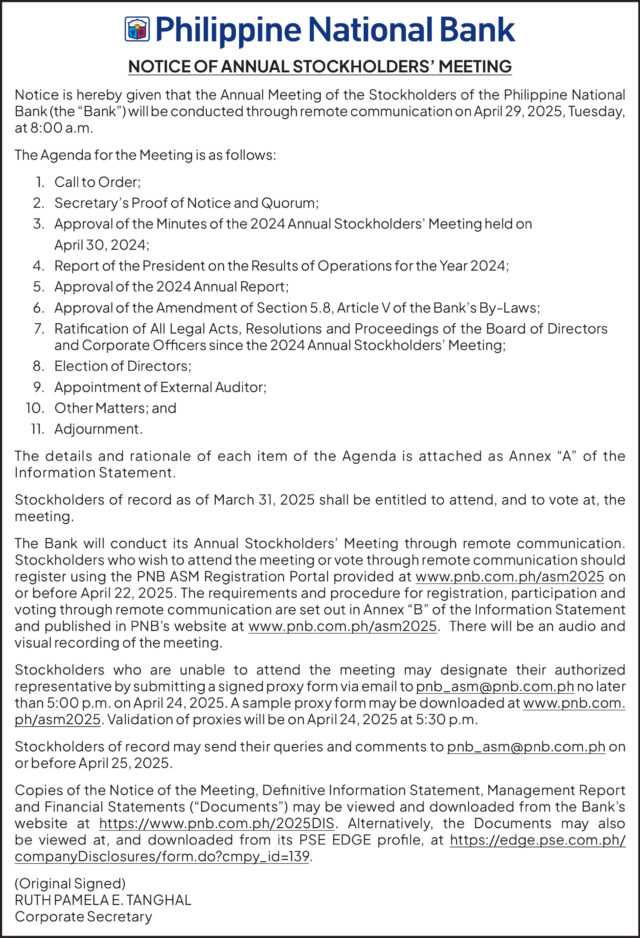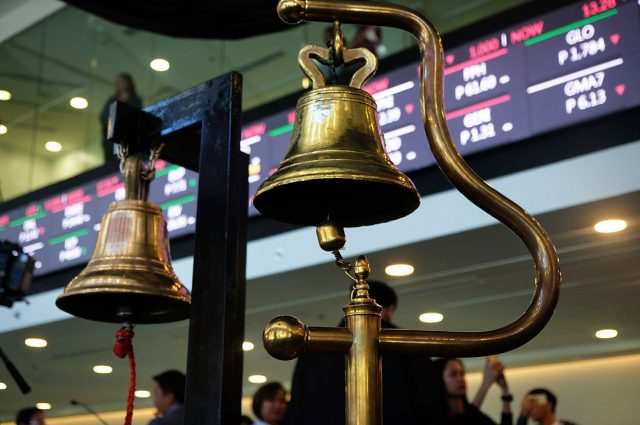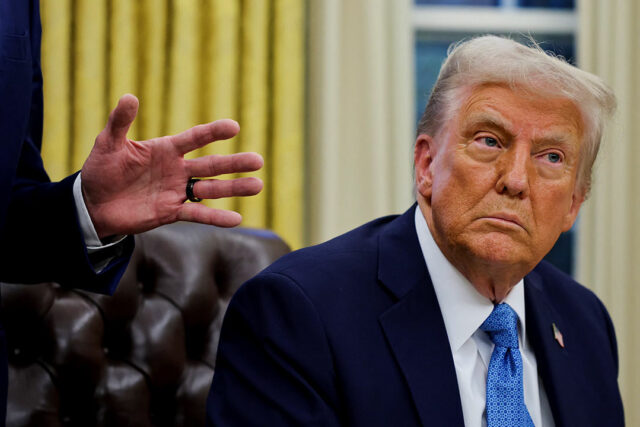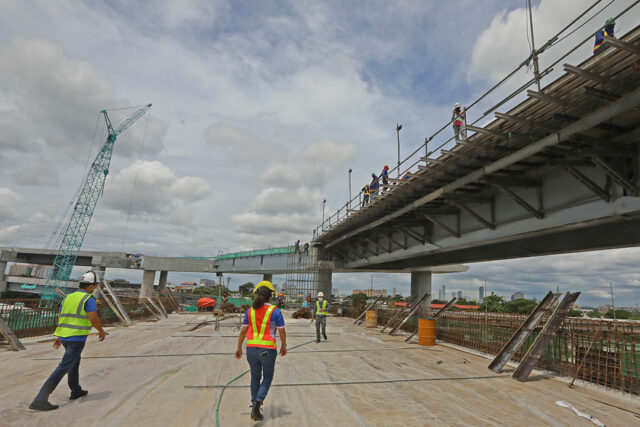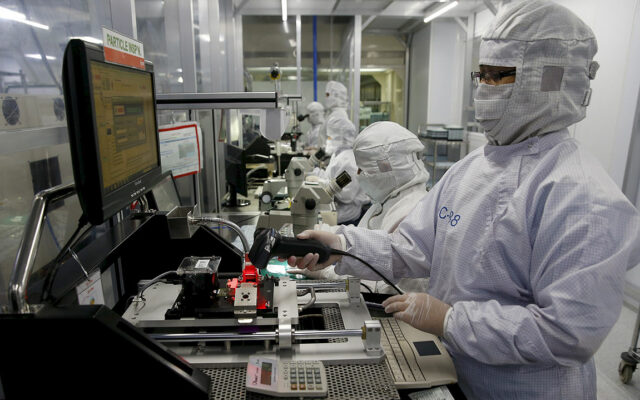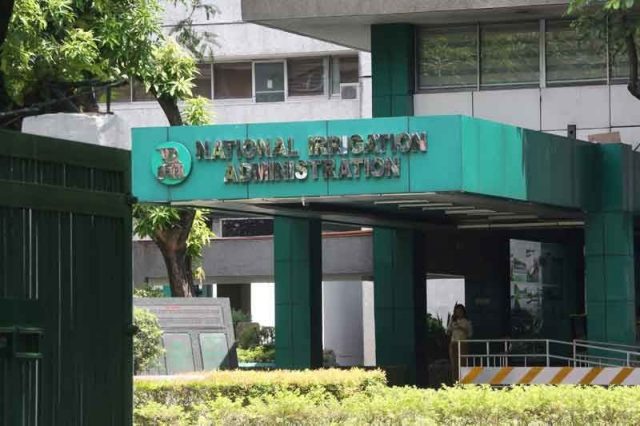By Justine Irish D. Tabile, Reporter
THE tariffs set by the Philippines on farm commodities have served to “significantly inhibit” US agricultural exports, the Office of the US Trade Representative (USTR) said in a report.
The USTR made the assessment in the 2025 National Trade Estimate (NTE), which it submitted on Monday to US President Donald J. Trump and Congress, ahead of a White House announcement on the tariffs it plans to impose on its trading partners.
Mr. Trump has indicated his intention to impose “reciprocal tariffs,” charging trading partners tariffs equivalent to what US exports are levied.
The Philippine practice of periodically reviewing its import tariffs on rice following Executive Order (EO) No. 62 is generating “market uncertainty,” the USTR added.
Citing the order signed by President Ferdinand R. Marcos, Jr. on June 20, 2024, the USTR said that EO 62 gives the Philippine government flexibility in the face of changes in the economic environment, but also raises uncertainty in terms of “whether the rice tariff rate will be extended or modified.”
EO 62 modified the tariff schedule for various products until 2028 to augment supply, manage prices, and address inflationary pressures.
EO 62 extends the lower tariffs imposed on imported pork and mechanically deboned meat at 15% within the minimum access volume (MAV) quota and 25% for shipments exceeding the quota; and on corn at 5% within the quota and 15% beyond it. The import duty on rice was set at a uniform rate of 15%, subject to a review every four months starting July 7, 2024.
“No American president in modern history has recognized the wide-ranging and harmful foreign trade barriers American exporters face more than President Trump,” US Trade Representative Jamieson Green said in a statement.
“Under his leadership, this administration is working diligently to address these unfair and non-reciprocal practices, helping restore fairness and put hardworking American businesses and workers first in the global market,” he added.
According to the NTE, the Philippines’ average most favored nation (MFN) applied tariff rate was 6% in 2023, averaging 9.6% for agricultural products and 5.5% for non-agricultural products, representing a decline from 2022 levels, according to the NTE.
“Under the MAV system, the Philippines has scheduled tariff-rate quotas on select agricultural products, including sugar, corn, coffee and coffee extracts, potatoes, pork, and poultry products, with in-quota tariffs ranging from 30% to 50%,” according to the NTE.
The report also found that the Philippine government distributed the initial allocation of the 2024 MAV in tranches, which caused “uncertainty for importers” and is contrary to the allocation method set out by an administrative order.
“In 2024, the distribution also commenced approximately one month later than the prescribed period under the Administrative Order No. 1 (1998), and the last tranche was released on Aug. 15, 2024,” it added.
The NTE is an annual report submitted to the US President and Congress by March 31 that details foreign trade barriers faced by US exporters and USTR’s efforts to reduce those barriers.
Aside from tariff barriers, the report also outlines non-tariff barriers, technical barriers, and sanitary and phytosanitary barriers, services barriers, and investment barriers, among others.
“The findings of the 2025 NTE underscore President Trump’s America First Trade Policy and the President’s 2025 Trade Policy Agenda,” the USTR said.
Citing President Trump’s 2025 Trade Policy Agenda, Philippine Trade Undersecretary Allan B. Gepty noted that Philippine and US trade policy align with or complement each other in many aspects.
“Notably, the US emphasizes the value and importance of security, which is also aligned with our priorities. In terms of trade, the Philippines is a strong advocate of a strategic trade regime where we regulate trade in dual goods or strategic goods,” he said via Viber message.
He said that it’s Philippine policy to prevent the proliferation of weapons of mass destruction, maintain international peace and security, and promote economic growth by facilitating trade and investment.
“It is also important that we ensure that the international supply chain is stable and secure,” he said.
“For example, the implementation of the country’s Strategic Trade Management Act has facilitated the execution of multiple contracts regarding intangible transfers of nuclear technology from US companies to Philippine business process outsourcing firms,” he added.
“On agriculture, noting US interest to export agricultural products, it may be worth noting that the US is the country’s major source of agricultural products, accounting for around 20%. This means that the US is a reliable partner of the Philippines even in food security,” he added.
“In sum, there is an imperative need to pursue stronger Philippine-US economic relations not only to boost the respective production capabilities of the two economies fueled by innovation but also to ensure a stable and secure supply chain,” he added.




